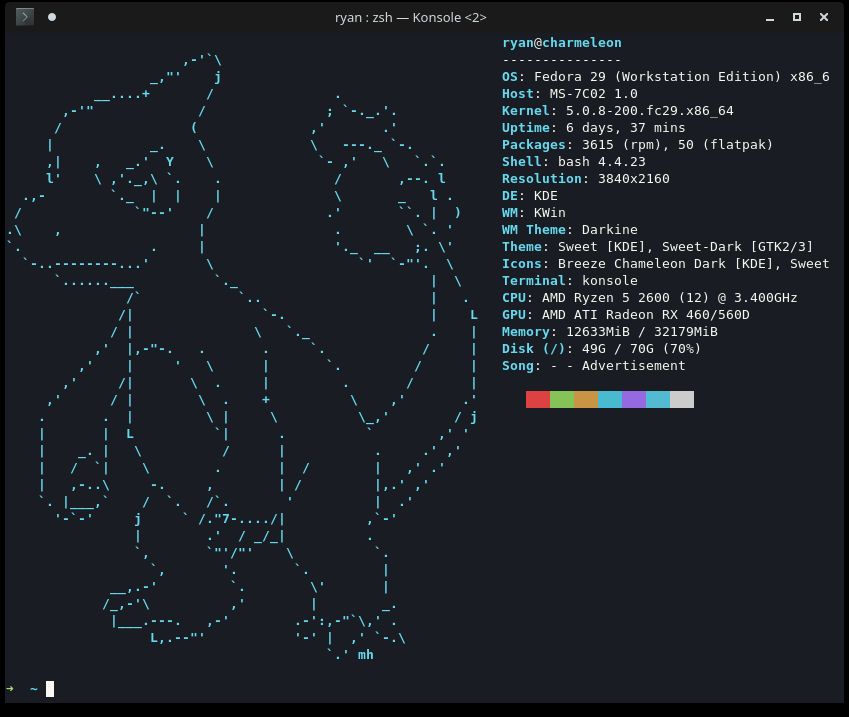Custom Neofetch ASCII Art

I have been using neofetch as my command-line system information tool for a few years now. While browsing /r/unixporn, I noticed that several of the submissions did not have distro logos in their neofetch/screenfetch ascii art. I knew that neofetch was customizable, but have never dug into it myself. So I decided to change that.
Custom Neofetch ASCII Art
I started my neofetch investigation the same way one should start researching
any Linux command-line tool: man neofetch. Inside the man pages, I was
greeted with all sorts of customization options. Eventually, I scrolled down to
the section I wanted, IMAGE BACKEND.
There I learned that a custom image could be specified using the --source flag.
For example, to set the art to an ascii charmeleon file I just happen to have
on my desktop, I tried:
neofetch --source /home/ryan/Documents/Pokemon-ascii/5.txtAAAAAND… It didn’t work. It was still the Fedora logo. Clearly, I was still missing something.
After some browsing, I found the ASCII art
page
on neofetch’s Github wiki. Reading it, I noticed that I was missing the ${c1}
in my pokemon ascii files. So, I made a copy of the file and added S{c1} to
the top:
➜ welcome-messages git:(master) ✗ head charmeleon
${c1}
,-'`\
_,"' j
__....+ / .
,-'" / ; `-._.'.
/ ( ,' .'
| _. \ \ ---._ `-.
,| , _.' Y \ `- ,' \ `.`.
l' \ ,'._,\ `. . / ,--. l
.,- `._ | | | \ _ l .
AAAAAND… It worked!
Adding a Shell Alias

Lastly, I wanted the charmeleon ascii art to be the default neofetch output on my
desktop. While I’m sure that I could have accomplished this properly by
editing the ~/.config/neofetch/config.conf file I learned about, for now…
creating an alias seemed easier XD. So I added the following line to my
~/.zshrc:
alias neofetch='neofetch --source /home/ryan/Documents/ascii/pokemon/charmeleon'Now whenever I call plain neofetch on my desktop, it runs with the charmeleon
art.
Conclusion
So that’s it. A nice short post for once! Despite the size, I hope if was useful. If you haven’t heard of neofetch before, go check it out. If you have, I encourage you to go digging through the man pages. I promise you won’t regret it. Enjoy!